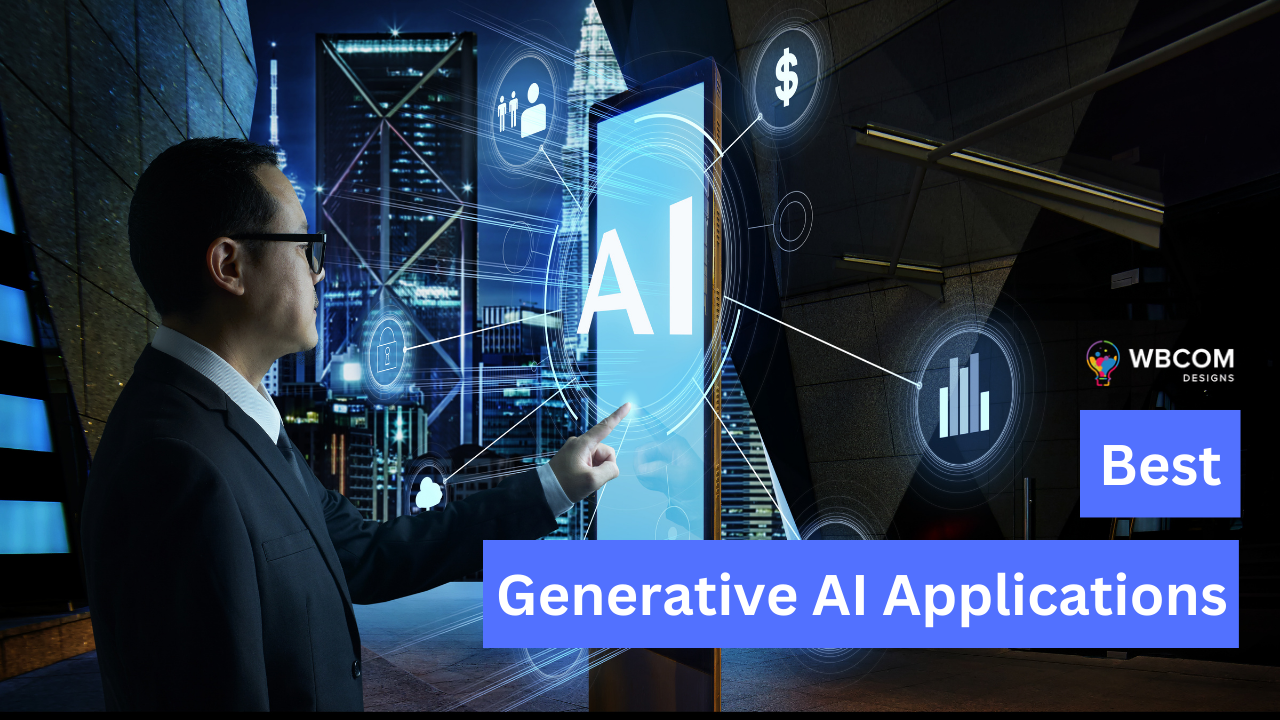Generative AI applications use deep learning and neural networks to create new content that is original and unique. These applications are capable of producing a range of content types, from text and images to music and video.
Generative AI works by training algorithms on large datasets and then using these datasets to generate new content that matches certain criteria or styles. For example, a generative AI application for music might be trained on a dataset of classical compositions, and then use this dataset to generate new pieces of music that sound similar to classical compositions.
One of the key advantages of generative AI is its ability to create new content that is both original and high-quality. This makes it a valuable tool for a range of applications, from creative industries like art and music to more practical applications like data analysis and forecasting.
However, generative AI also presents some challenges and ethical considerations, particularly when it comes to issues like bias, privacy, and ownership of intellectual property. As with any new technology, it is important to approach generative AI with caution and consideration for these factors.
Table of Contents
ToggleBest Generative AI Applications Of 2024
Here are some examples of the best generative AI applications:
1. GPT-3
GPT-3 (Generative Pre-trained Transformer 3) is a state-of-the-art natural language processing (NLP) model developed by OpenAI. It is a neural network model that has been pre-trained on a massive amount of text data using unsupervised learning techniques. GPT-3 is capable of generating human-like text, translating languages, and answering questions, among other things.
GPT-3 uses a transformer architecture, which allows it to process text in parallel, making it much faster than traditional sequential models. It has 175 billion parameters, making it one of the largest neural networks ever created. Because of its size and complexity, GPT-3 is able to perform many different NLP tasks with high accuracy and without the need for task-specific training.
GPT-3 has a wide range of potential applications, such as language translation, content creation, chatbots, and virtual assistants. It has already been used in a number of commercial products and services and has received significant attention and interest from researchers, developers, and businesses around the world.
2. DALL-E
DALL-E is a generative AI application developed by OpenAI that creates original images from textual descriptions. It is named after the artist Salvador Dali and the character WALL-E from the Pixar film of the same name. DALL-E uses a combination of deep learning techniques, including GANs (Generative Adversarial Networks) and transformers, to generate images based on textual input.
Users can input textual descriptions of objects or scenes, and DALL-E will create original images that match the descriptions. For example, users could input “an armchair shaped like an avocado” or “a bridge made of glass that stretches over a river” and DALL-E will generate an image that matches the description.
DALL-E is unique in that it can create images of objects and scenes that do not exist in the real world. It has the potential to be used in a wide range of applications, such as in graphic design, advertising, and entertainment. DALL-E has received significant attention and interest from the research and AI communities, and its development represents a significant step forward in the field of generative AI.
3. AIVA
AIVA (Artificial Intelligence Virtual Artist) is a generative AI application that creates original music compositions. It was developed by the Luxembourg-based company AIVA Technologies, and uses a combination of deep learning techniques, including neural networks and reinforcement learning, to generate music.
Users can input parameters such as the genre, mood, and length of the music they want to create, and AIVA will generate an original composition that matches those parameters. The generated music can be used in a variety of applications, such as in film and video game soundtracks, advertising jingles, and as background music for podcasts or videos.
AIVA is unique in that it can create original music compositions in a wide range of genres, including classical, pop, and rock. It has been used by a number of high-profile clients, including UEFA (the Union of European Football Associations) and SKY (a British broadcasting company). The development of AIVA represents a significant step forward in the field of generative AI for music composition.
4. Runway ML
Runway ML is a generative AI application that allows users to create, train, and deploy machine learning models for a variety of creative applications. It was developed by the company Runway and uses a user-friendly interface and pre-built templates to make it easier for non-technical users to create and experiment with AI-powered creative projects.
Runway ML includes a range of tools and features for generative applications, such as image and video generation, style transfer, and natural language processing. It also includes integrations with popular creative software tools like Adobe Creative Cloud and Unity, making it easy to incorporate AI-generated content into existing projects.
One of the key features of Runway ML is its ability to run machine learning models in real-time, making it possible to create interactive applications and installations that respond to user input in real-time. This has led to Runway ML being used in a range of creative fields, including art, design, and film.
Overall, Runway ML is a powerful tool for anyone interested in exploring the possibilities of generative AI in creative applications, regardless of their technical background or experience.
5. Magenta
Magenta is an open-source project that aims to create generative AI applications for music and art. It was developed by Google’s Brain team and is designed to allow musicians, artists, and developers to explore the possibilities of AI-generated content in their creative work.
Magenta includes a range of tools and models for music and art generation, including models for music transcription, generation, and modification, as well as models for image and video generation. It also includes a user-friendly interface and pre-built templates to make it easier for non-technical users to experiment with AI-generated content.
One of the key features of Magenta is its ability to allow users to collaborate with AI in real time. This means that musicians can play an instrument or sing into a microphone, and Magenta will respond with an AI-generated accompaniment or melody in real-time. This has led to Magenta being used in a range of musical applications, from experimental jazz performances to AI-generated pop songs.
Overall, Magenta is a powerful tool for anyone interested in exploring the possibilities of generative AI in music and art, regardless of their technical background or experience. Its open-source nature also means that it is constantly evolving and improving as more users contribute to its development.
6. Image Generation
Image generation is a process in which an algorithm or model is used to generate new, original images based on a set of input parameters or data. The goal of image generation is to create images that are visually appealing, realistic, and diverse.
One common approach to image generation is to use generative adversarial networks (GANs), which are deep learning models that consist of two neural networks: a generator network and a discriminator network. The generator network takes random noise as input and generates an image, while the discriminator network takes an image as input and tries to determine if it was generated by the generator or if it is a real image. The generator network is trained to fool the discriminator network into thinking that its generated images are real.
Another approach to image generation is to use variational autoencoders (VAEs), which are deep-learning models that can learn a low-dimensional representation of a set of images. This representation can then be used to generate new images by sampling from the learned distribution.
Image generation has many practical applications, such as in the fields of art, design, and entertainment. For example, image generation can be used to create realistic 3D models, generate unique images for marketing and advertising campaigns, or create virtual environments for video games and simulations.
These are just a few examples of the many generative AI applications that are available today. As the field of AI continues to evolve, we can expect to see even more powerful and innovative generative AI tools emerge.
Conclusion On Generative AI Applications
Generative AI applications have revolutionized various industries, including art, music, and design. The ability to generate content autonomously has led to the creation of new opportunities and has transformed the way people approach creativity. While there are numerous generative AI applications, some of the best ones include GPT-3, DALL-E, AIVA, Runway ML, and Magenta. These applications offer unique capabilities and have different use cases, from generating text and images to creating music and designs. As the technology behind these applications continues to advance, we can expect to see even more innovative and exciting generative AI applications in the future.
Interesting Reads:
How to start engagement in your community?








